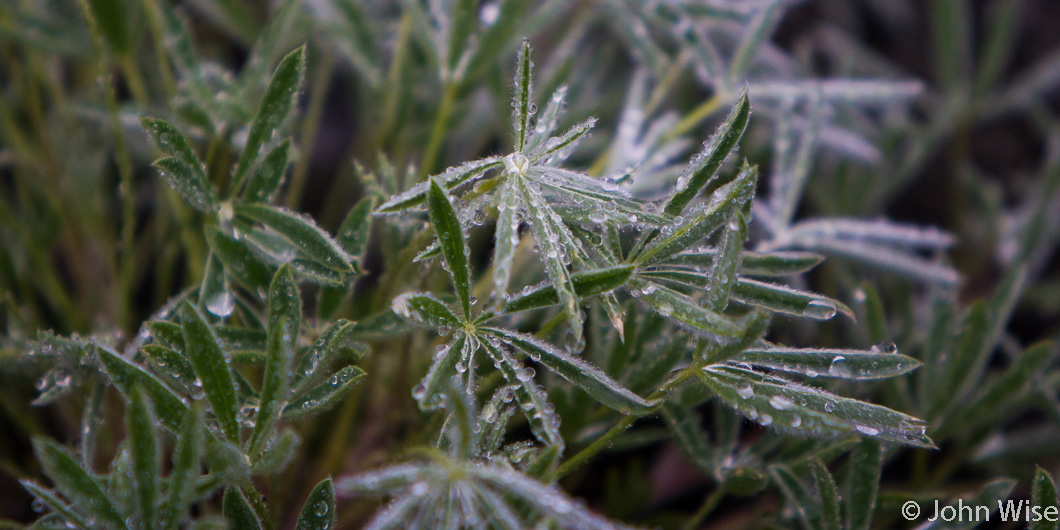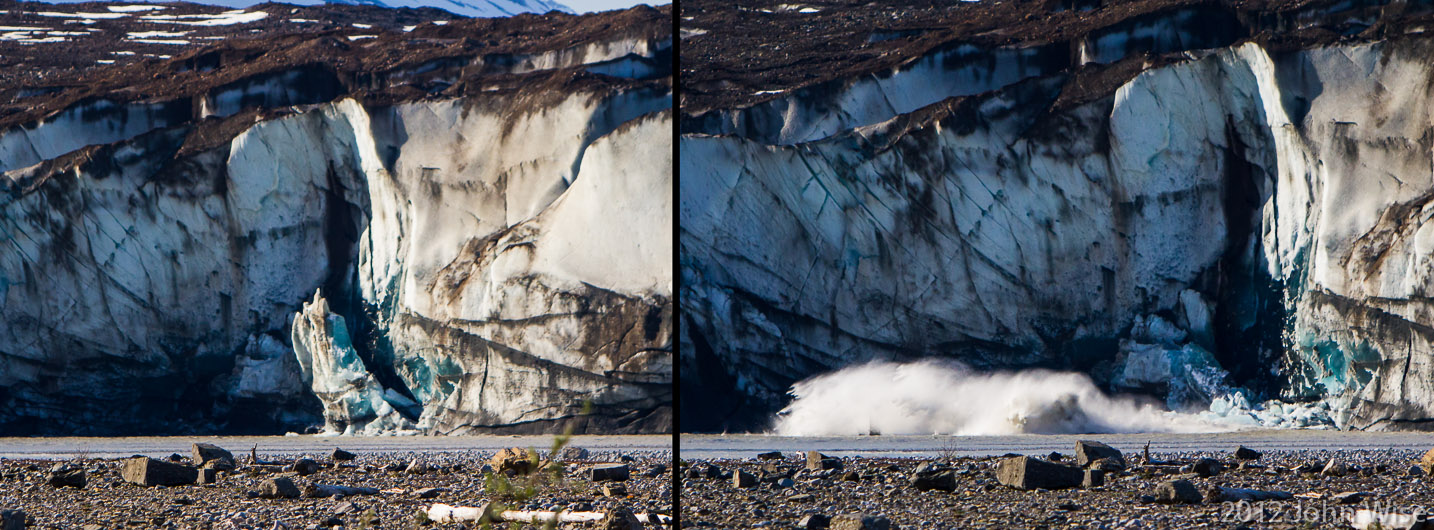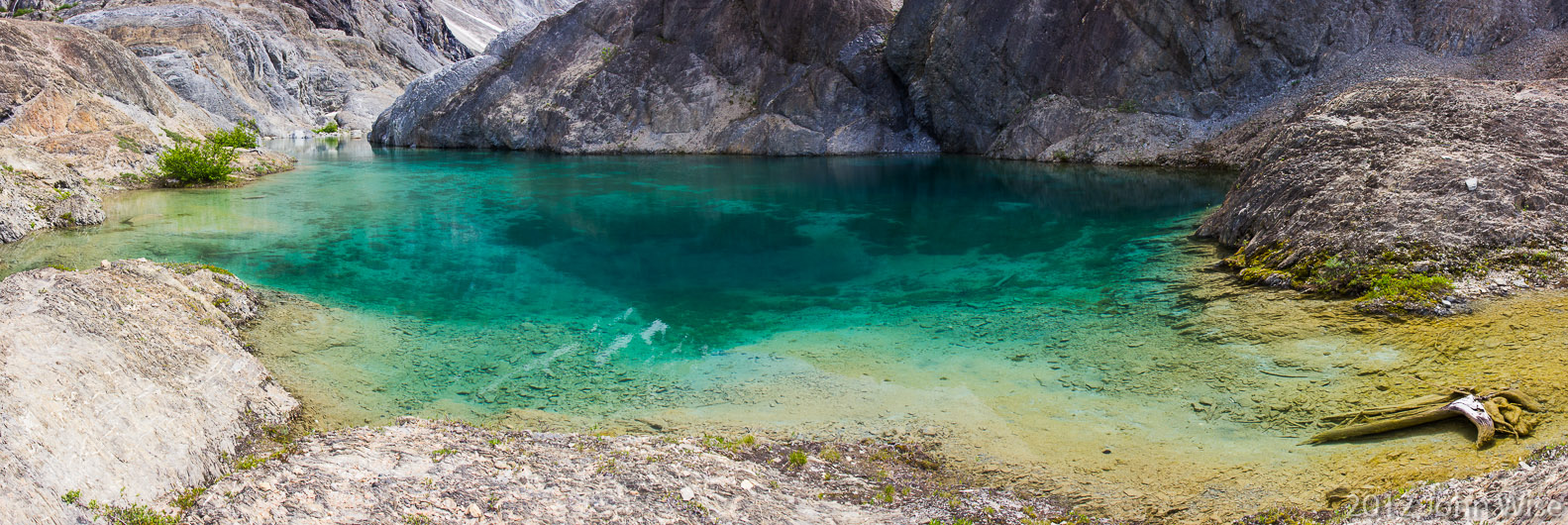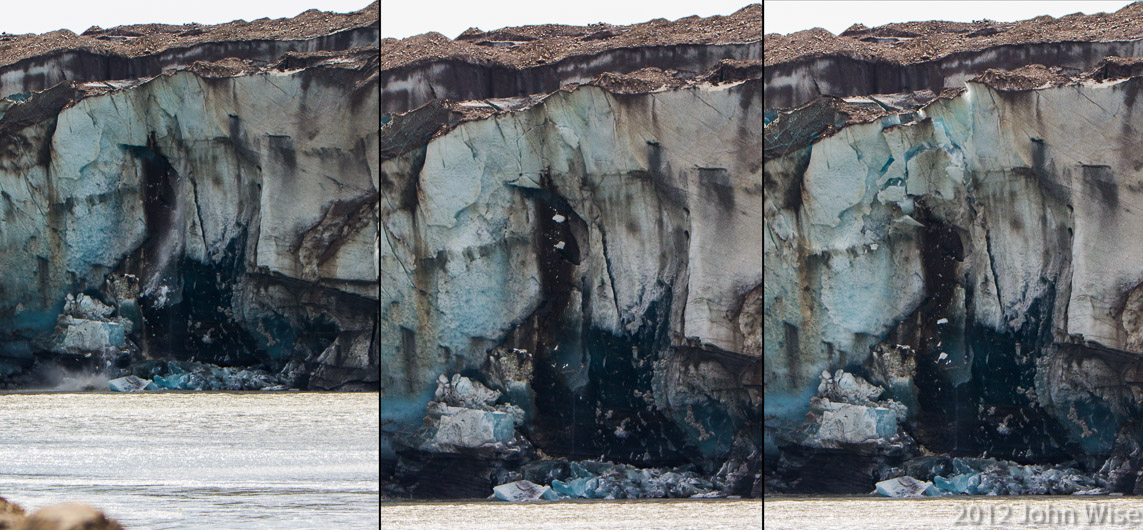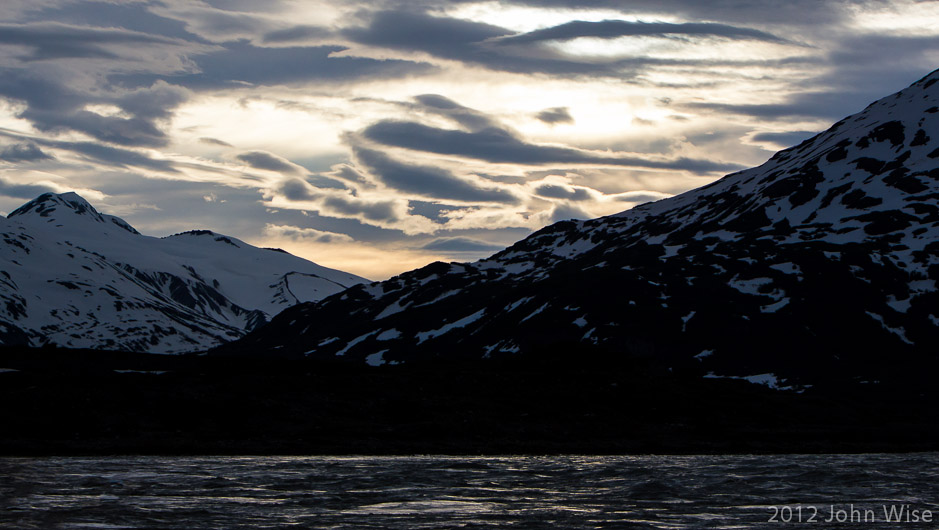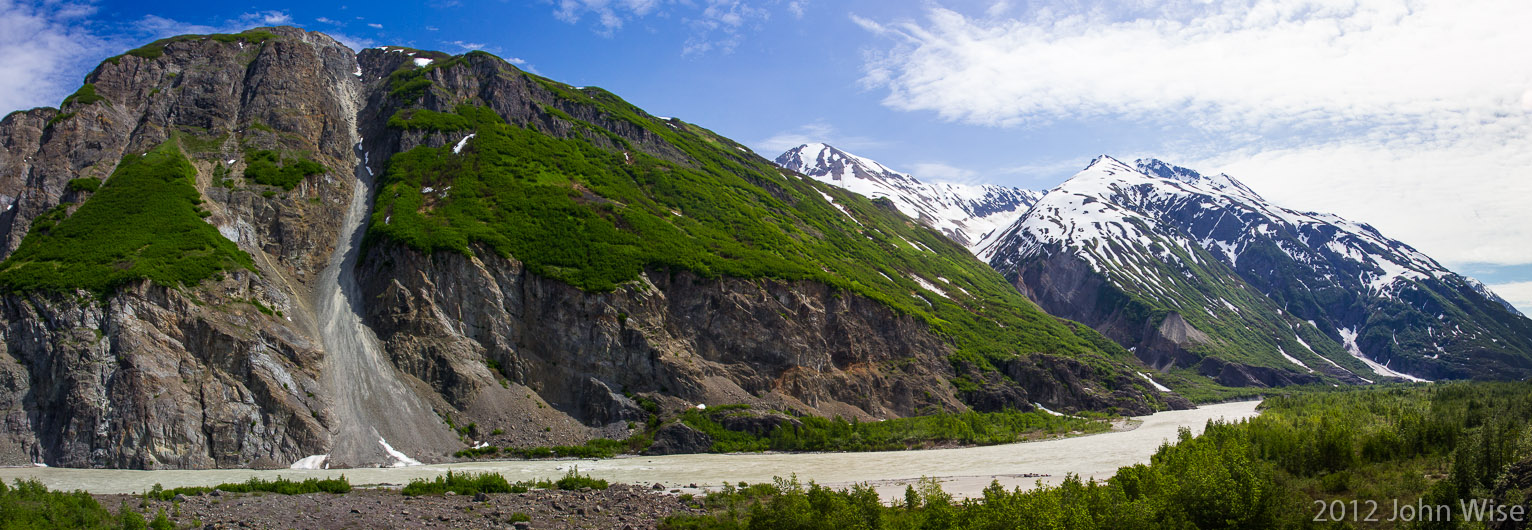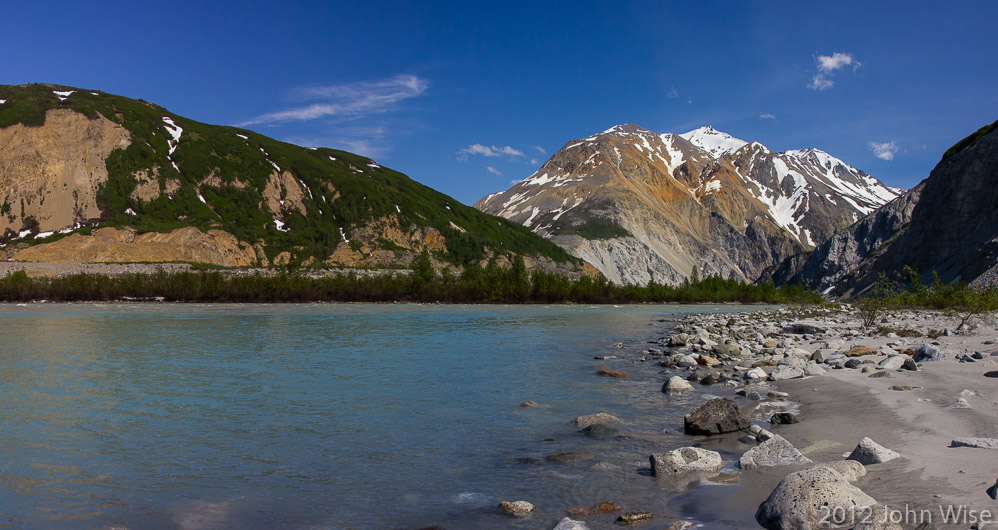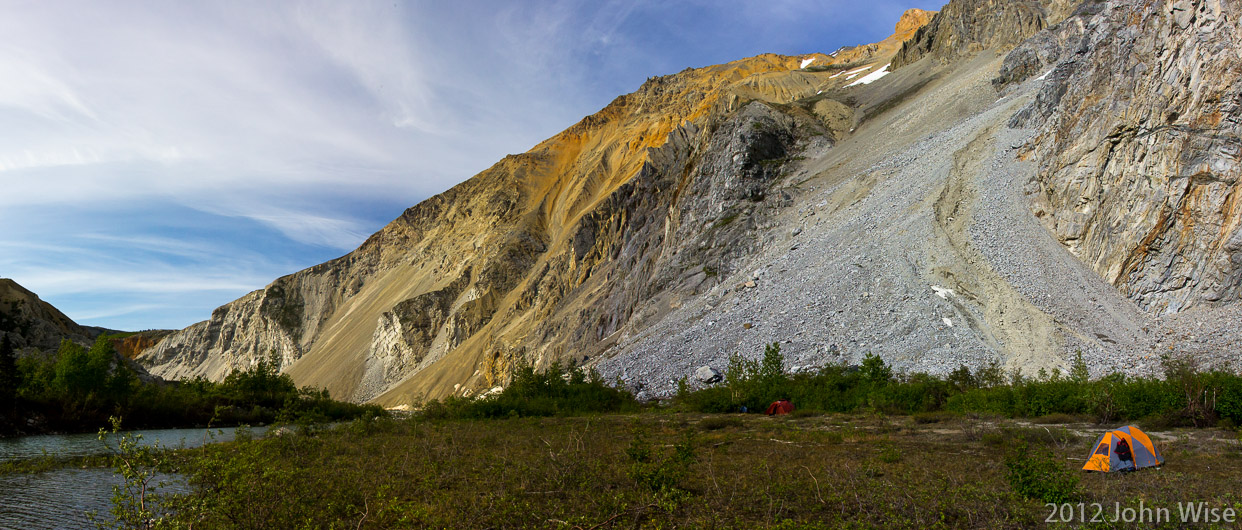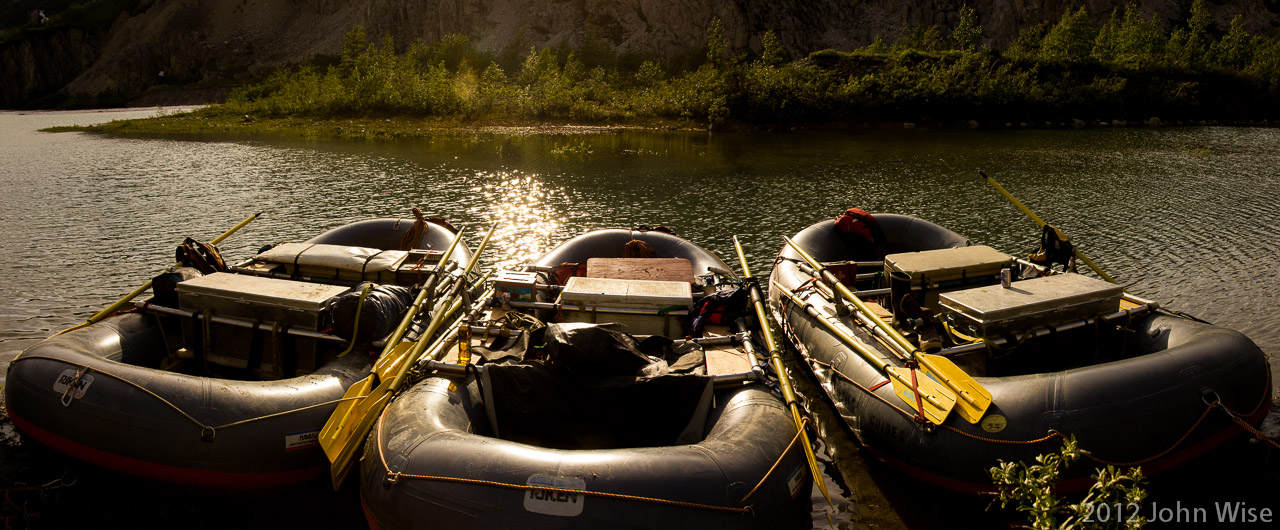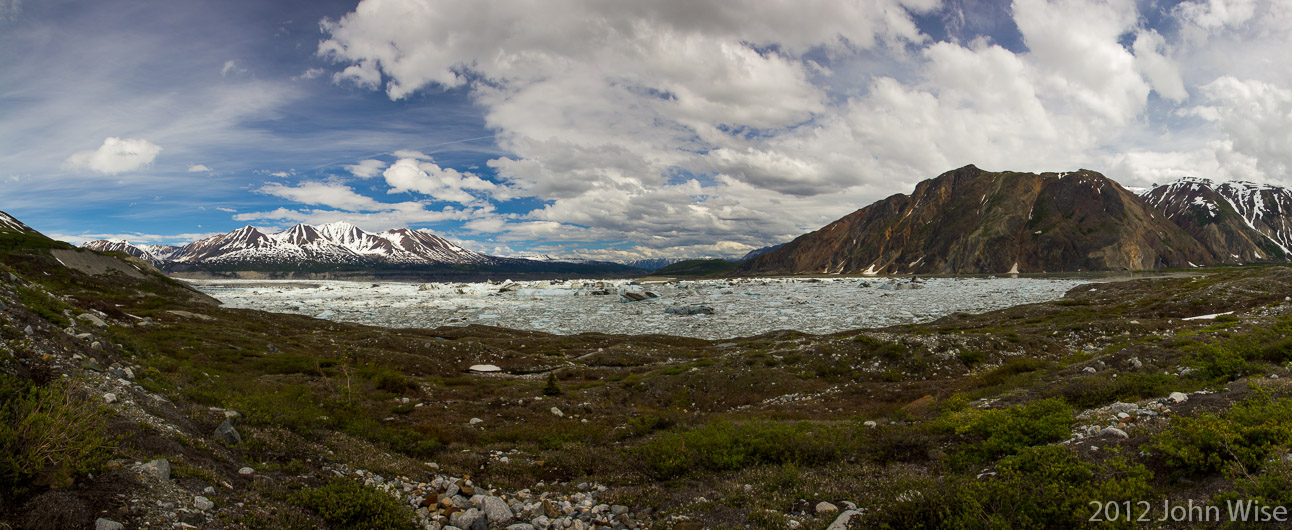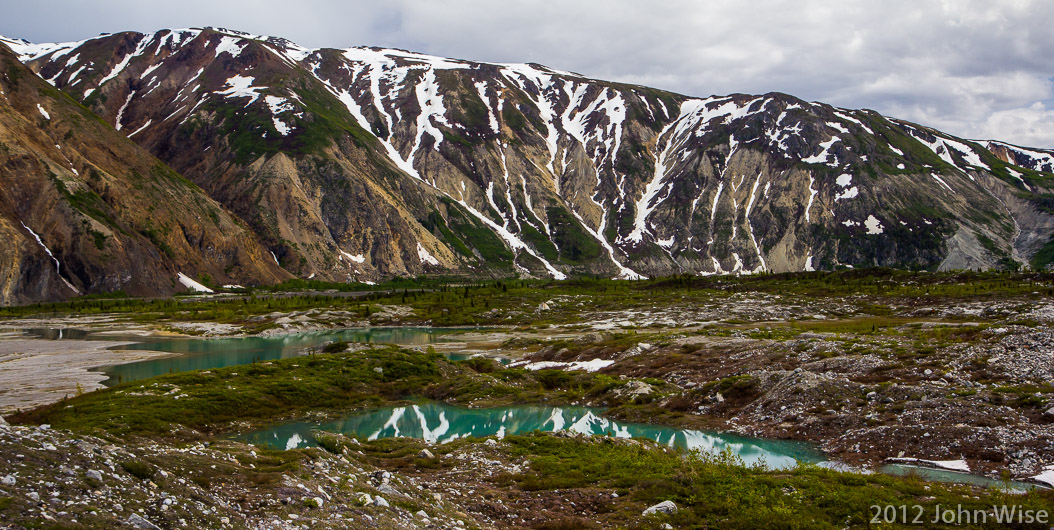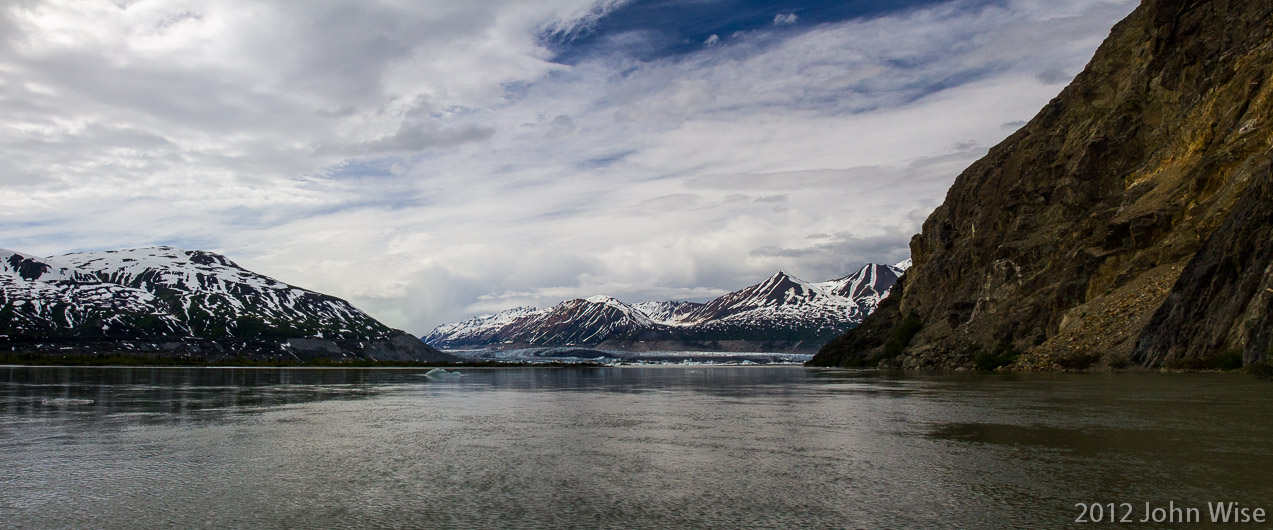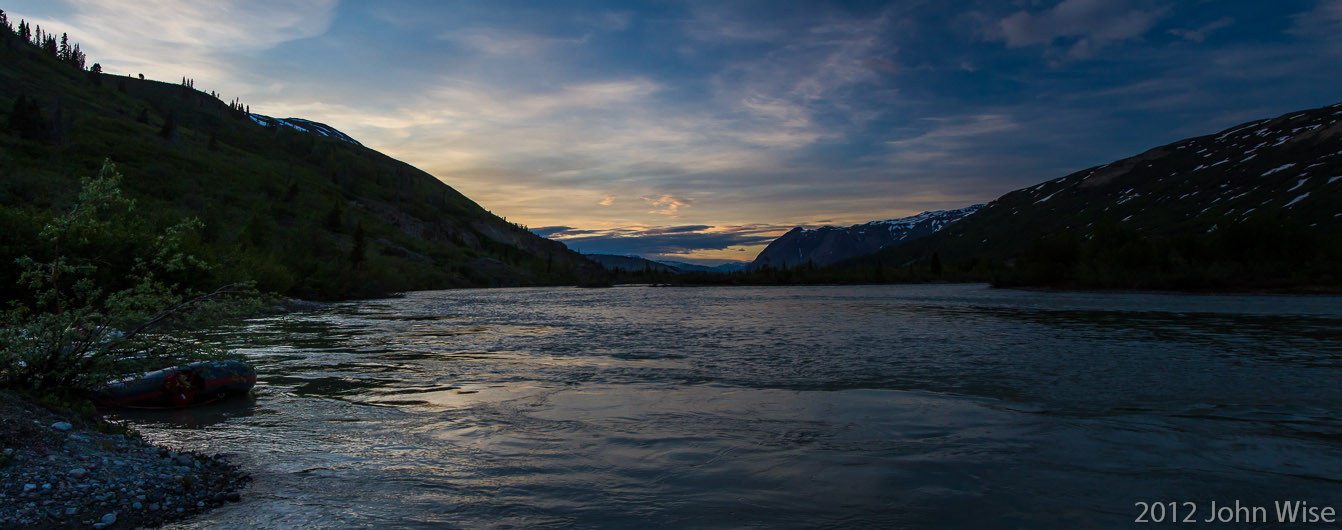
We rise early in a place that doesn’t really have a night, and the new day may as well be a continuation of the one that preceded it. Without the fall of darkness, the sounds of the day do not take pause and so this day must be another part of the same day. The waterfall behind camp continued to roar as we attempted to sleep, the river in front of us maintained its chatter with the rustling tree leaves that danced to the winds and is still doing so now. There is no telling where we are truly going, how long it will take to get to any particular point, or if anyone should really care about anything more than the idea that here we are, and that is that. Time must have been persuaded to vacate the area. Only the second day on the river, and already I am losing track of how long this adventure has been unfolding, as though that mattered or had a bearing on what will occur as we pull our sleepy heads from the clouds and exit our tent for another glimpse of this beauty that extends beyond words.

All we have to do as humans is put ourselves into the path of life, where nature has the responsibility of crafting an earth that sustains, feeds, and entertains us while accepting our abuse. Out here, armed with paddles, rubber rafts, and cameras, we are no match for the strength of spectacle that is employed by the life that surrounds us. We are consumed by the immensity and are hostage to its whims, or we can be guests of its graciousness if we choose to see our humble place within it. This method and location of travel is rare; only a few brave individuals dare venture into these parts; maybe this is a testament to the dearth of character among people who are worthy enough to be allowed passage on such hallowed earth. But here I am, forced to take stock of what has put me here. How have I earned the right to make myself present in this cascade of the profound? Do others recognize their obligation to tremble in respect before the grandeur through which they travel?

Permanent death comes but once, but tiny deaths chip away at lives guided by routine. These types of adventures are opportunities to get off the treadmill, to go out and find that which has not been seen, at least by our own eyes. Most things that demand our senses to be focused on experiencing the unknown are part of an adventure. One mustn’t place themselves in harm’s way to know what the horizon looks like from a new perspective; we can also look up, look over, and look all around us right where we are. Open our minds to the idea that what we don’t know doesn’t make us stupid; it only suggests that we haven’t given something a try. Tolerance, love, empathy, and inspiring others are not weaknesses, they are the tools one requires to work on making ourselves better people. Some day, our walk on the trail of life will end, just as it did for this moose. Will the memory of our existence leave behind a beautiful treasure that speaks of what our lives may have been like? Or will the ashes of our memories be scattered like silt into the river that empties into the sea?
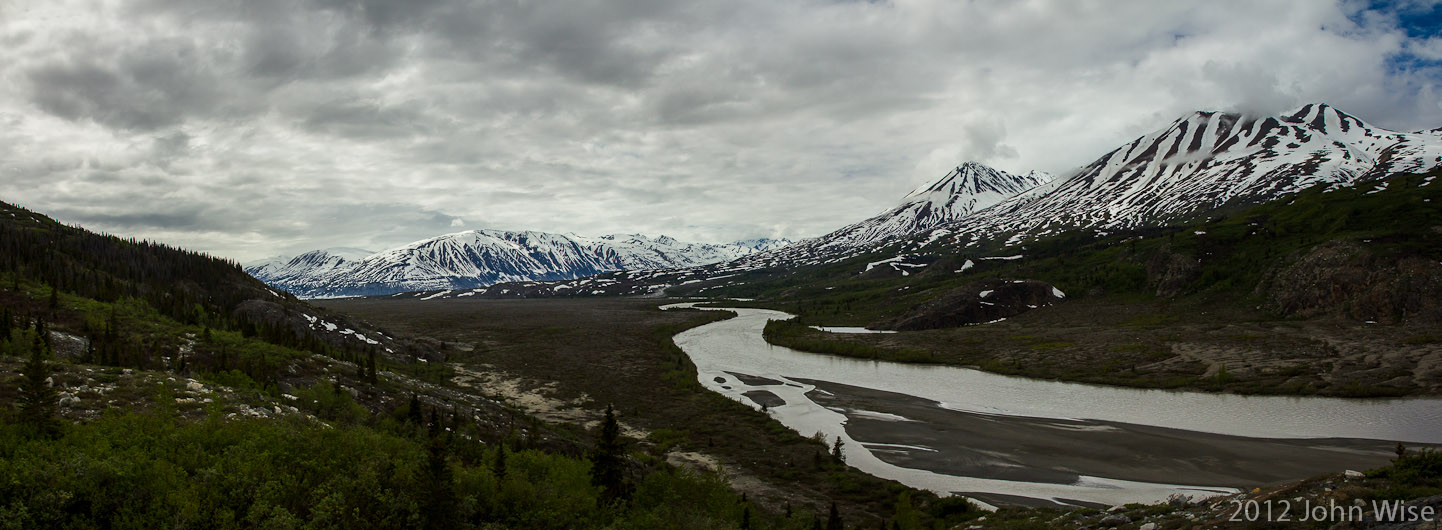
At the bottom right of this image is a hint of the “Braids” we will thread during this river adventure. Depending on the volume of river flow, the water that is rushing to the ocean will determine how much of the river bed is exposed. It is up to the experience of the boatman to find a channel that will allow our passage without running aground. One does not want to exit the raft in the river to help shift it forward; this water is cold, seriously life-threatening cold. Your effort to dislodge the raft may only see it getting stuck again a few feet forward, so it is prudent to know where the best channel is for safe passage. But, the deepest part of the river is not always the most desirable. What happens when a great opportunity arises that would give us access to an overlook where we can see sights such as what we are looking at in this photo? We then take a side channel, a braid, and keep our fingers crossed. Once committed to the narrow route, there is no turning around. In the distance at the foot of the snow-covered mountain, we are seeing hints of Lowell Glacier. For the indigenous people of this area, it is known as Naludi.

Don’t get lost in the expansive vistas, though; there is much to be seen in the cracks and crevices, too. What is it that entertains my sense of awe to look at a scene that no other human may have ever taken the time to stop and look at? Why must I typically go to a museum to look at patterns that are outside my routine when nature is painted with a vibrant pallet of colors gleaned from the visually stunning world of random chance? Maybe for those who are more desirous of the familiar, these are just some rocks and stuff. To me, this is the work laid down by the hand of nature only found in the passage of time.

And now the cracks. Look close, do you see the face? It is the most recognizable object one might see on this rock, but if you look even closer, you might find other motifs hidden in the lines and worn surface. This river valley was once part of a passage that the native people of the coast and those further inland used in order to trade. Hidden throughout this landscape may be the signposts left carved upon the earth by their ancestors, but with less than 200 of us a year traveling this corridor, the chance of finding those artifacts may take many more decades if we should ever be so lucky to find them at all. I cannot say this is a rock art panel with any certainty, but to my untrained eye, I see many things that nag at my curiosity as to what I’m really seeing.

We were only on the river a short time before we were exiting our rafts again. This stop will offer us an overlook with a birds-eye view of Naludi (Lowell Glacier). Even with people in the photo for comparison, it is not really possible to comprehend that the base of the mountain on the other side of the glacier is over three miles (5km) away. I sit here in silence for a time, trying to see it all, feeling that I am only seeing the surface of the atom, leaving so much more that will have to remain unknown and unseen. Should I ever return, I will be sure to roll around in the brush like a dog scratching its back; maybe then I will gain greater awareness that I’ve really been here. Looking back at these images, I stand in respect of those who have gone here and can hardly believe I was, in fact, one of those lucky people.

Welcome to the path you dare not cross. From our vantage on the hill and with my best zoom lens, this is as close as I could get to the glacier. This is a place of near-certain death. A frozen bulldozer of ice careens forward as it carves mountains into fine sand. It has no concern for those who might venture upon its jagged surface, and while one may get so far in their effort to cross its convulsive trail, there is no guarantee of being able to continue on your way or to be successful in finding a way back. Not to say there are no clues of those who have tried, as on occasion, bodies are found of indigenous people that were lost in the ice. For centuries prior to our arrival, they lived upon these icy lands and traveled its dangerous routes. The large rock formation is known as a “Nunatak.” Somehow, these rocks have withstood the abrasive forces of the glacier and forced the ice river to detour around its commanding presence.

Lowell Lake. Here, size matters. These icebergs are proverbial wolves in sheep’s clothing. The first thought in my head upon seeing icebergs was, wow, I want to see these up close. That is until you hear one rolling over, thunder explodes from the lake, and strangely enough, you will likely have difficulties even seeing where it happened. How, with such a great view, can you have a problem seeing it? Some of these icebergs are over ten stories tall, that’s how.

This is our wildlife sighting for the day. Wikipedia tells me the ptarmigan is of the grouse family and that here in North America, it is also known as the snow chicken. During the winter, the ptarmigan is white, some of that camouflage can still be seen. With summer in full swing, it is turning brownish to blend in with the low brush. It needs this cover to hide from its predator, the golden eagle. These birds are sedentary, which may make them some of our distant ancestors 🙂

The good fortune of a clearing sky is that we have this rare opportunity to see Mt. Kennedy in the distance some 40 miles (65km) away, which is also the location where Lowell Glacier gets its start. The mountain is named after President John F. Kennedy, but it was his brother, Robert Kennedy, who first summited the peak back in 1965. Sitting up there at 14,000 feet (4,300 meters) is memorabilia from the President that Robert left in his brother’s memory. I took this photo as we were passing through a small rapid on our way to entering Lowell Lake.

We are at the lake and having our first encounters with icebergs. This deep blue, smoothly scalloped chunk of ice has recently rolled over. Under the lake’s surface, the flow of water sculpts bergs just as the weather above wears them down. It is this shrinking underwater part of an iceberg that creates an imbalance that ultimately contributes to the berg turning over. Due to this fragile relationship of which side is heavier at any given moment, there is great uncertainty as to when a shift in the wind or water current disturbs that fragile balance and over the iceberg goes. Inside of me is also a fragile balance of curiosity that wants to throw caution to that wind and make an approach to reach out and touch these glimmering objects of nature’s art.

The raft I was on was the first to weave its way through the ice gauntlet. This wasn’t easy and required some of us on board to help row, as the lack of current and strong winds made for a difficult passage. Care must be taken when passing ice; it isn’t easy to determine how much of it is submerged and out of view. The workout of dipping a paddle into the water and helping row is great for warming us in the wind. Between the time we passed through and the other two rafts finding their way, the ice shifted; it’s constantly doing so. This brought up an interesting potential situation: while we could easily enter the lake today, by the time we leave, it may not be so easy to do so. The exit could be blocked by an ice jam! Well, that could be interesting too because then we will learn how to portage three rafts, a bunch of gear, and a couple of hundred pounds of food.

This diamond of an iceberg is a floating jewel. I learned that it is clear because it is old ice, which is from the bottom of the glacier ice. The pressures it is exposed to is what has made it clear. It is in part, these information extras as to why we requested Bruce Keller to join us; this man is a font of knowledge. He explained how this clear ice forms and how the bottom of glaciers take on an almost malleable plastic nature when under such great pressure. Precisely, what was said is sadly lost in the myriad of details that were still and would continue to overwhelm me for the duration of the trip. What else is special about this mini-bergette is that just after taking this photo, Caroline and I plucked it from the frigid water to bring it ashore for cocktail hour. The boatmen had an ice pick on hand that was quickly within reach; you can guess we are not the first travelers to want to use Pleistocene-era ice in our refreshments. We chip into our catch to enjoy the oldest ice cubes we will likely ever use to chill our drinks.

Let the tears flow. From right here, our chosen campsite, while staying in front of Lowell Glacier, Caroline and I had our first encounter with an overwhelming emotional outbreak that drew the water from our eyes. Sure, we could have had a lakeside room with a view of the glacier, but it was this site that took my breath away. At this very moment, every element within this landscape converged to create the most perfect view that I felt I may ever camp before. A thousand-foot waterfall directly ahead, another taller one on our right out of view of this photo, snow-covered mountains, and the roar of a calving glacier on our left. Could it be any more perfect than this?

As it gets later in the day, Mt. Kennedy is still visible; the sun hovers low over the shoulder. The lake reflects golden tones, and the wind ripples its surface in silence. Icebergs travel at electron speeds in comparison to our full-stop halt before perching to absorb this view into our memories. Bruce tells us a story of how, on a previous journey down the Alsek at this very site some years before, the group heard a deafening roar; something big calved off the glacier. They had just pulled ashore and were getting ready to start unloading the rafts when they could see a large wave coming their way. The order was yelled to head up the hill to higher ground, in came the wave that thrust their still-full rafts 20 feet up the hillside depositing them right where we had set up our kitchen and more than a few of our tents. Now, it all makes sense why driftwood is scattered about the camp; this must be a rather common occurrence. Was this in any way frightening? Not a chance; by now, the sense of adventure is in full swing. I want to be ready for everything; it’s all just incredible. By the way, we had Thai food for dinner. Yep, life is something else away from the treadmill.









